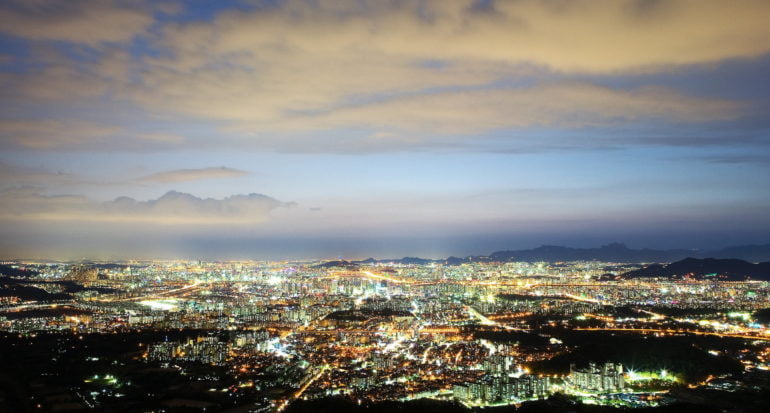Update (April 6, 2020): The government has extended the national campaign of social distancing to April 19, 2020.
As cases of coronavirus are increasing in Europe and the United States, where many countries have imposed lockdowns, the situation in South Korea has been steadily improving. South Korea’s approach to COVID-19 has been characterized by full transparency, preemption, and prevention. With a total of 4,144 people recovered from coronavirus, and 414 people released from quarantine today, South Korea has notably driven case numbers down.
South Korea appears to have greatly slowed down its epidemic, reporting 104 new cases today — down from a peak of 909 new cases on February 29 — bringing the total to 9,241 infections. There are currently 4,966 people in quarantine. The death toll stands at 131.
The New National Campaign Against Coronavirus
Through expansive and well-organized testing programs, along with efforts to isolate infected people and trace their contacts, South Korea has tested around 364,942 people. The continued battle to prevent the illness from re-entering the country has prompted the government to tighten border control and led South Korean medical officials to encourage vigilance.
The government has rolled out a national campaign of guidelines for a 15-day push to further the fight against COVID-19.
The enhanced social distancing campaign calls for citizens to stay at home as much as possible from March 22 to April 5. A call for action for all citizens, the national campaign consists of six guidelines:
1. Cancel or postpone all non-essential gathering, dining out, social events, and travel plans.
2. Stay at home and get sufficient rest, if you have fever, cough, sore throat, or other respiratory symptoms.
3. Wash your hands, cover up sneezes and coughs, and maintain strict personal hygiene.
4. Avoid leaving home, except to purchase necessities, get medical care, or go to work.
5. Keep a 2-meter distance from others, avoiding handshakes and forms of physical contact.
6. Return home immediately after leaving work.

Purchasing Face Masks
As the government is working to reduce the inconvenience of purchasing masks, there have been restrictions set in place to distribute the limited supply of masks. To purchase masks at pharmacies, Korean citizens must show their ID cards while foreigners living in South Korea must have their alien resident card along with their insurance card.
Individuals whose birth year ends with the number one or six can purchase masks on Mondays. For those ending with a two or seven, on Tuesday; Wednesday, with three or eight; Thursday, with four or nine; Friday, with zero or five. People who did not purchase masks on weekdays can do so on the weekends.
New Screening Procedures for International Arrivals
Screening procedures are in place at airports in South Korea, where all passengers arriving from Europe are tested for coronavirus. South Korean nationals arriving from Europe and foreigners entering the country from Europe on long-term stay visas are subject to a 14-day quarantine. A stronger screening process will be applied starting March 27 for travelers from the United States and other countries that have experienced large outbreaks.
Travelers from the United States, regardless of nationality, will be required to get a screening. People who test positive will be transferred to a hospital while those who test negative will enter self-quarantine at home for 14 days. Individuals subject to self-quarantine are required to install the self-quarantine mobile app to be monitored by their local government. Failure to comply is punishable by imprisonment up to one year or a fine up to 10 million won.
With the surge in cases centered mostly around a main cluster from a church in Daegu, the major area of confirmed cases is located in the city, with 6,482 cumulative confirmed patients. The number of cases have continued to slightly rise in Gyeonggi and Seoul, where there are 401 and 360 confirmed cases, respectively. The number of cases in Chungnam has risen to 124. Overall, the country has been experiencing a downward trend in new cases by identifying the clusters of infected, actively testing hundreds of thousands of people, as well as by tracking potential carriers using cell phone and satellite technology.


